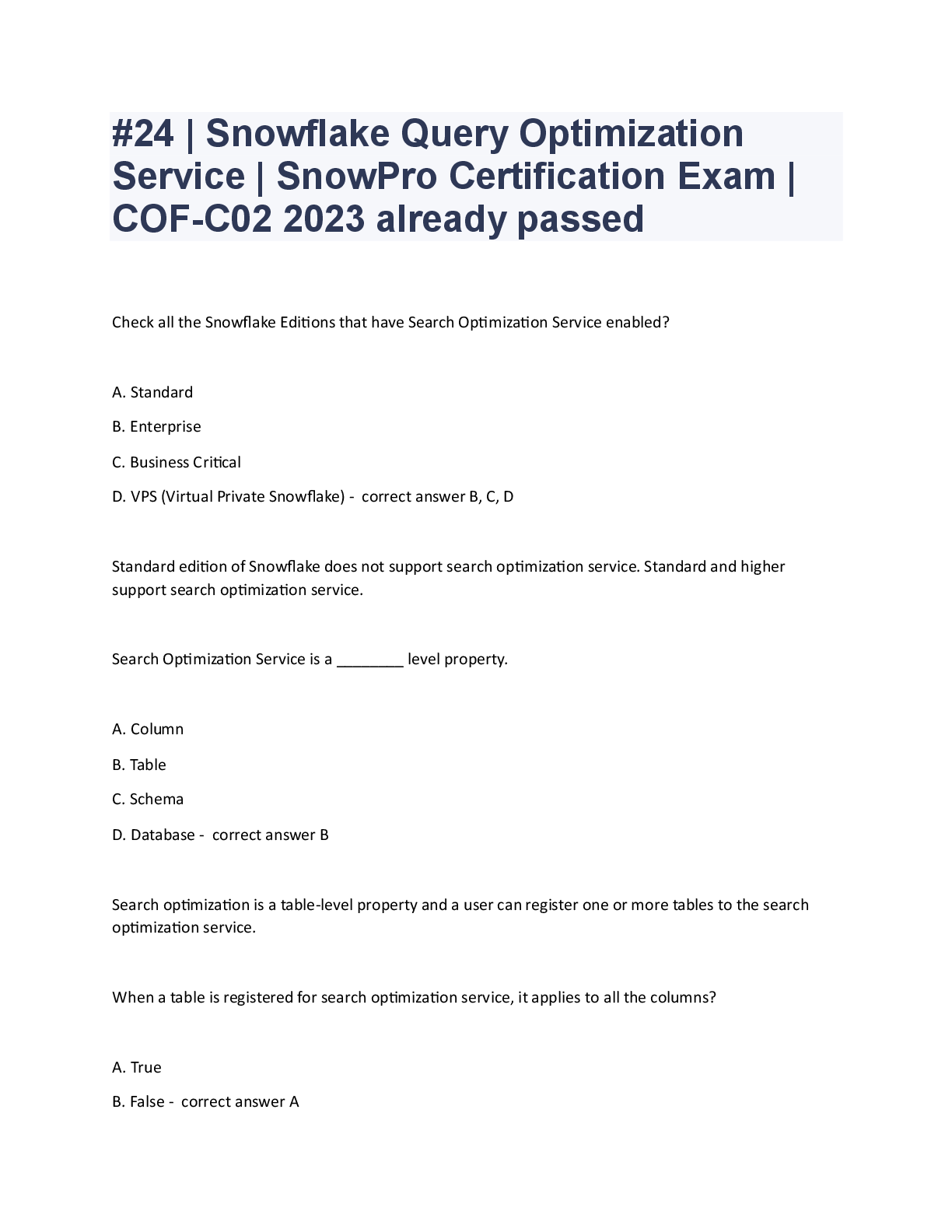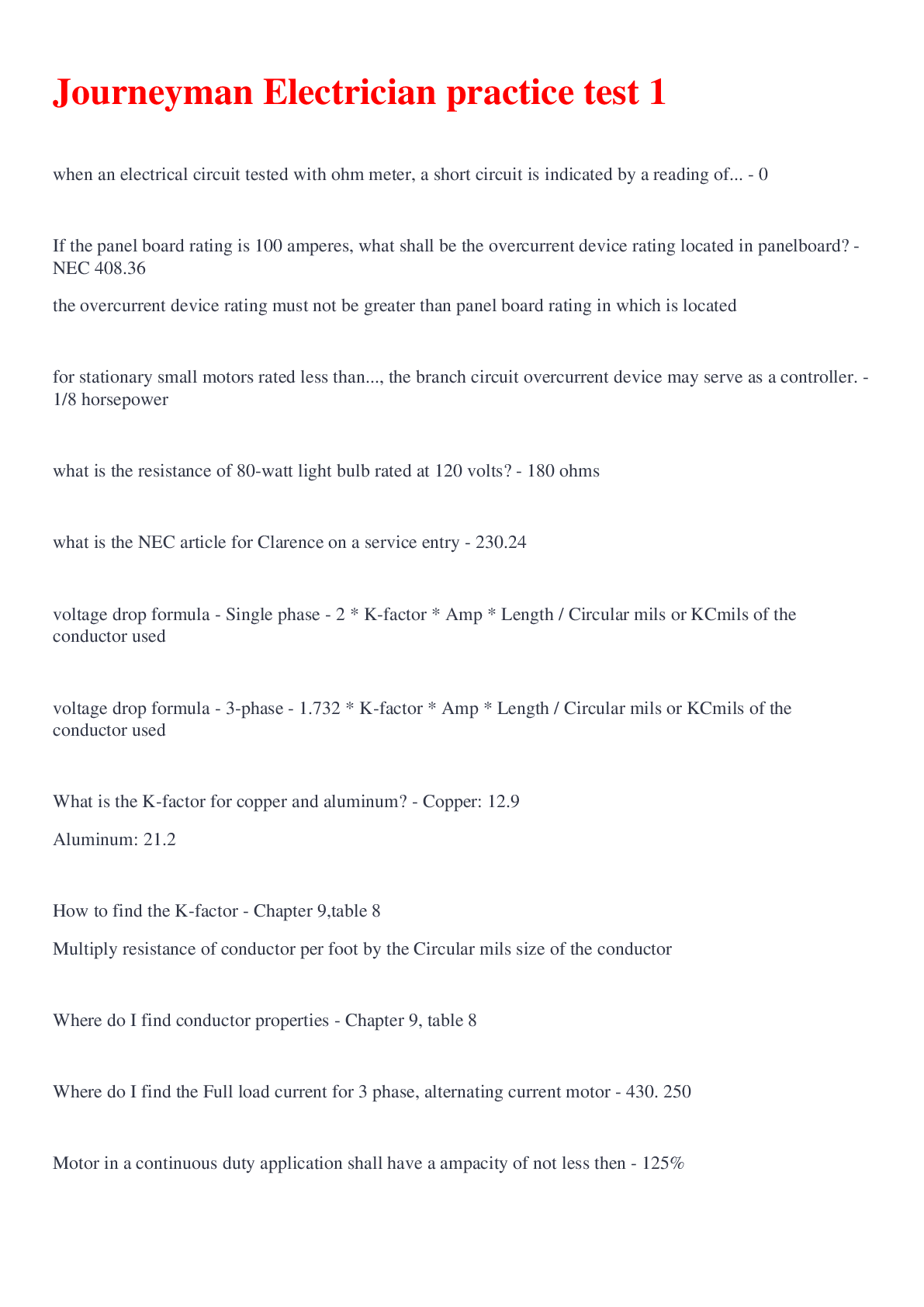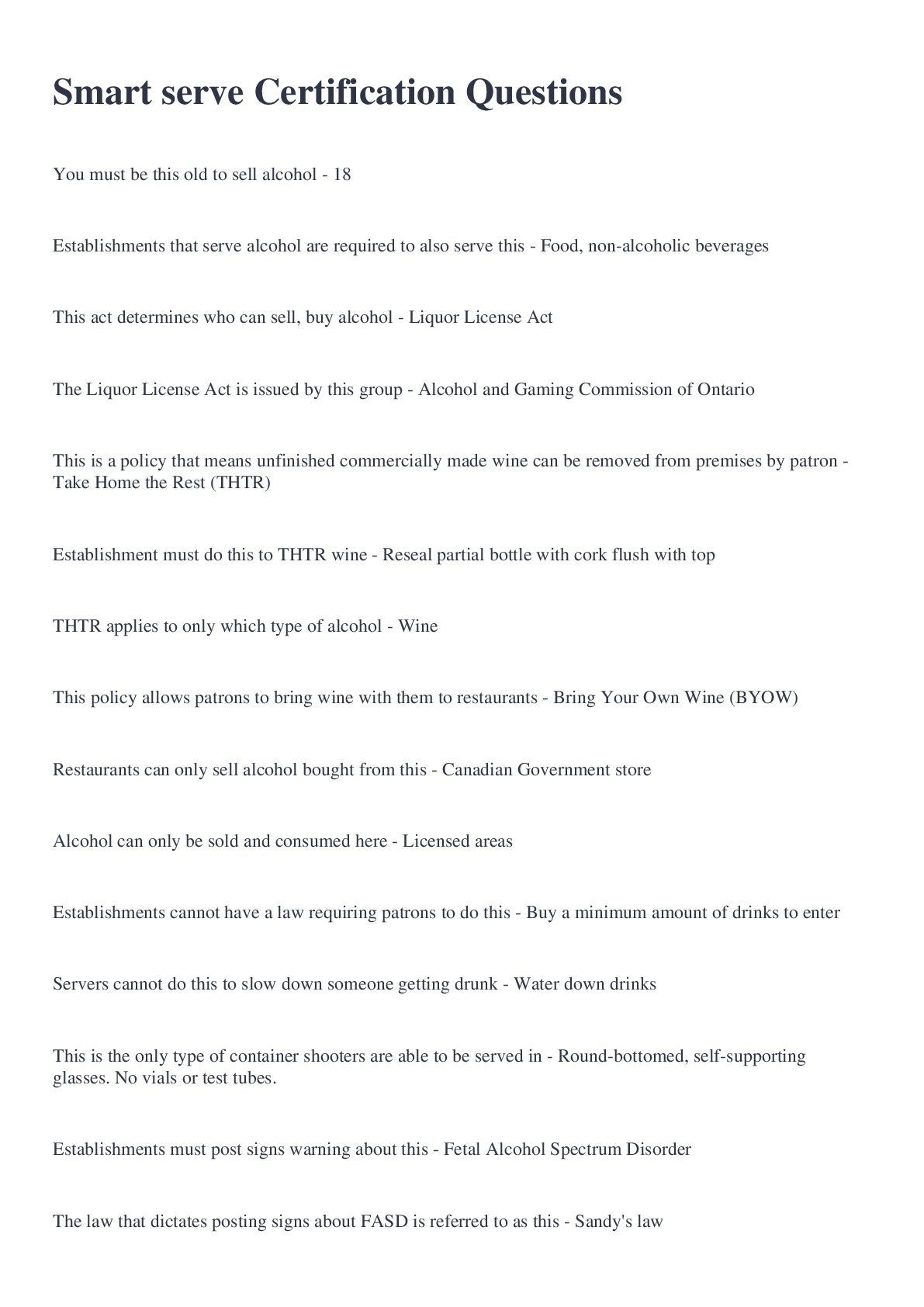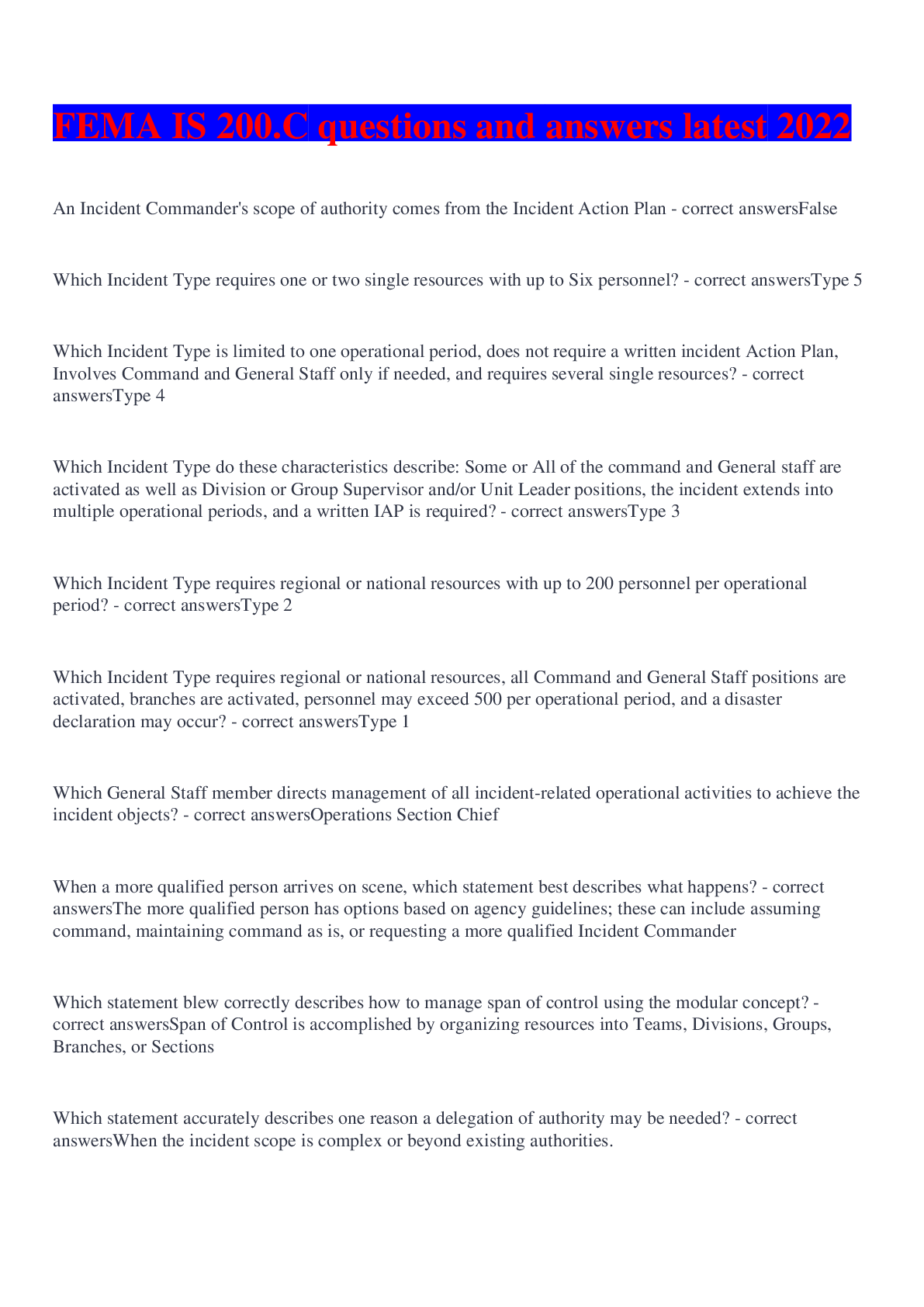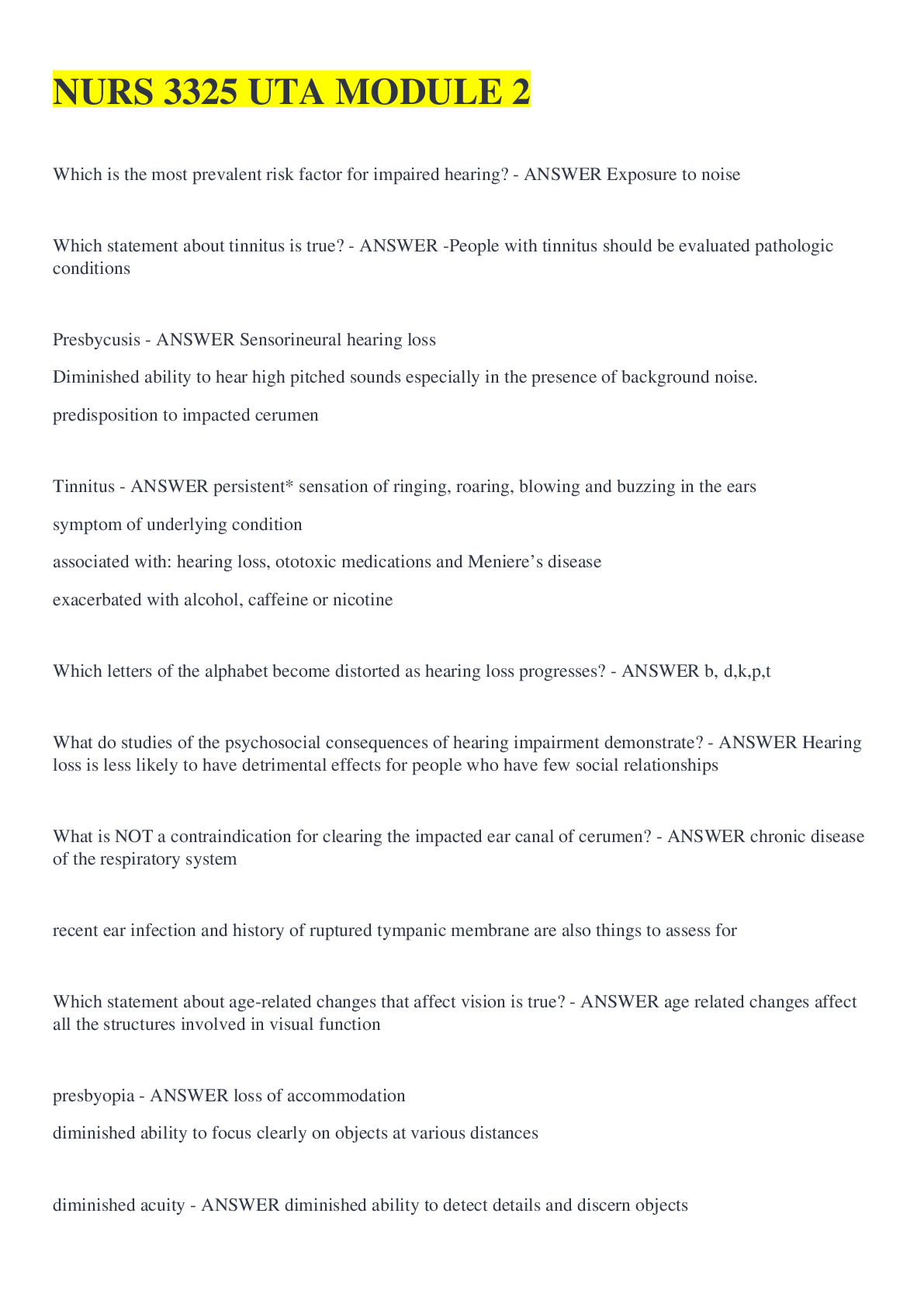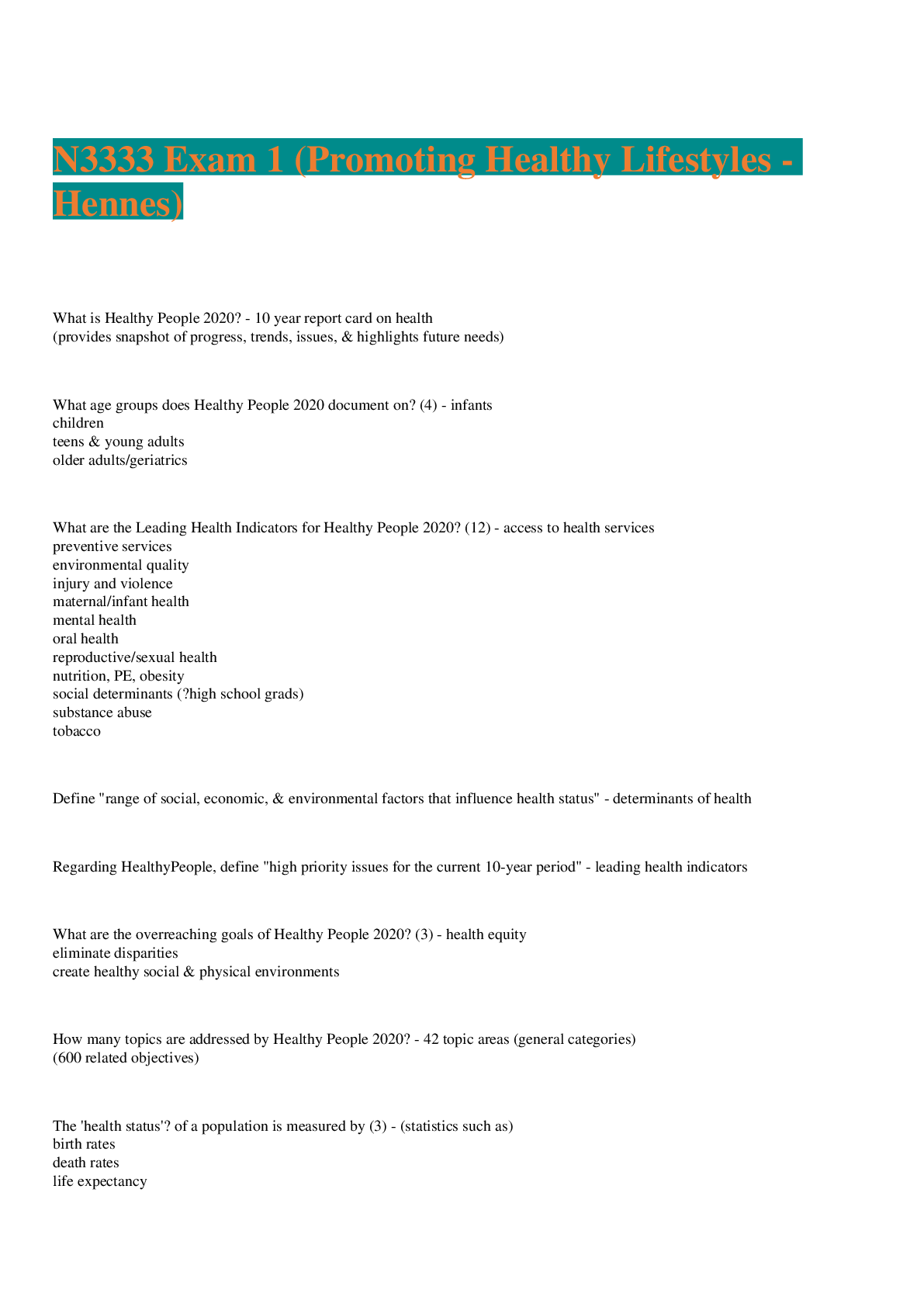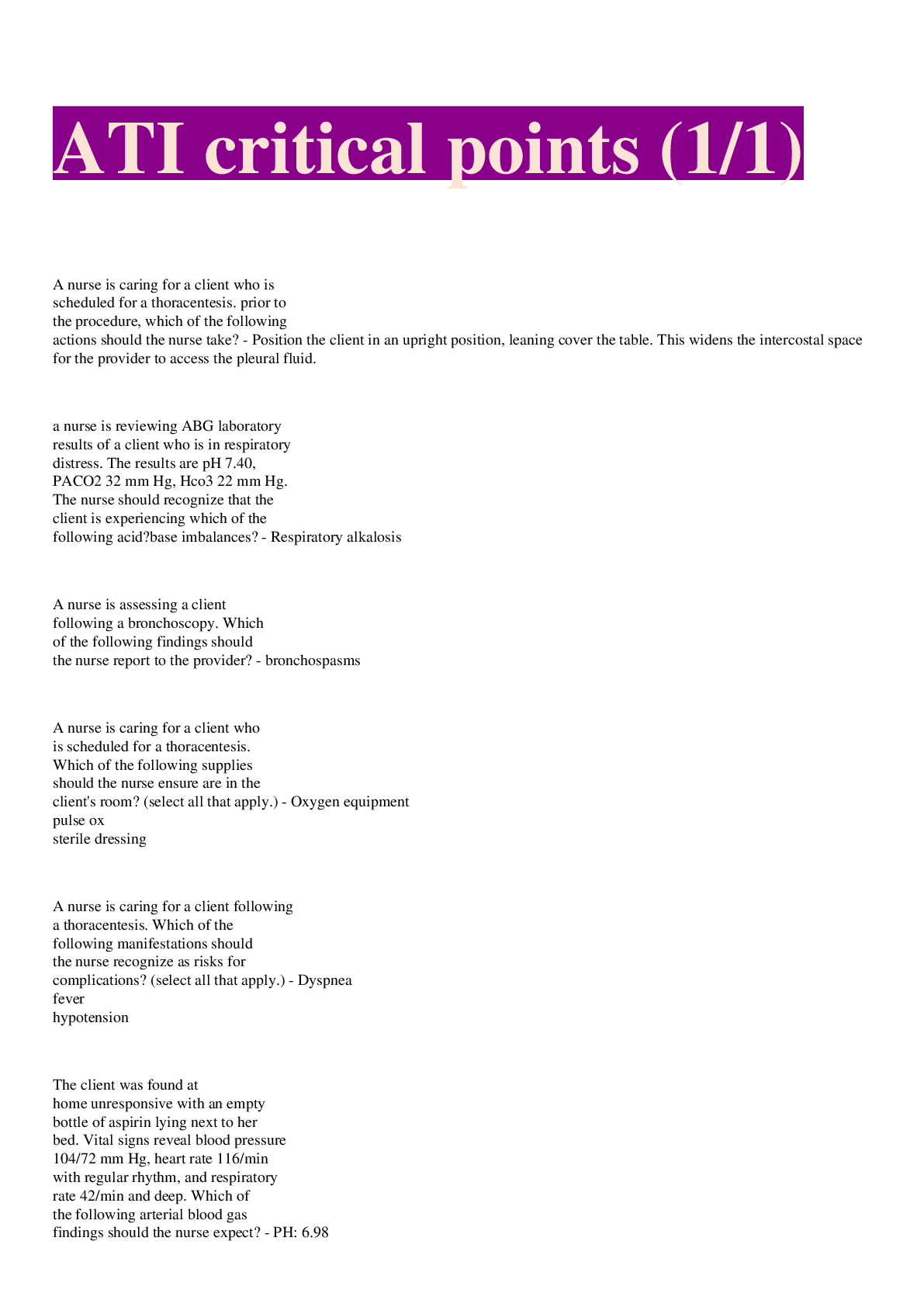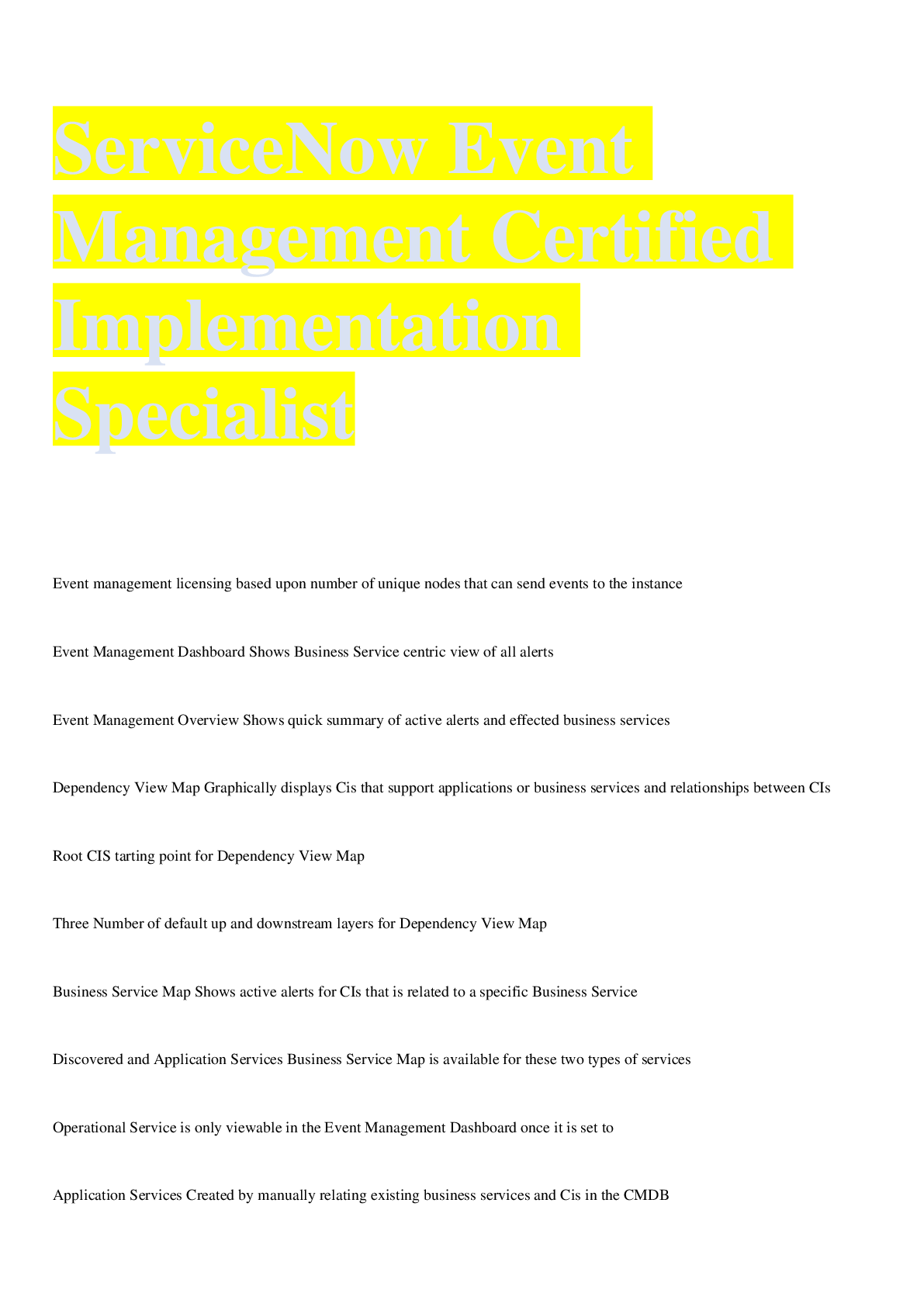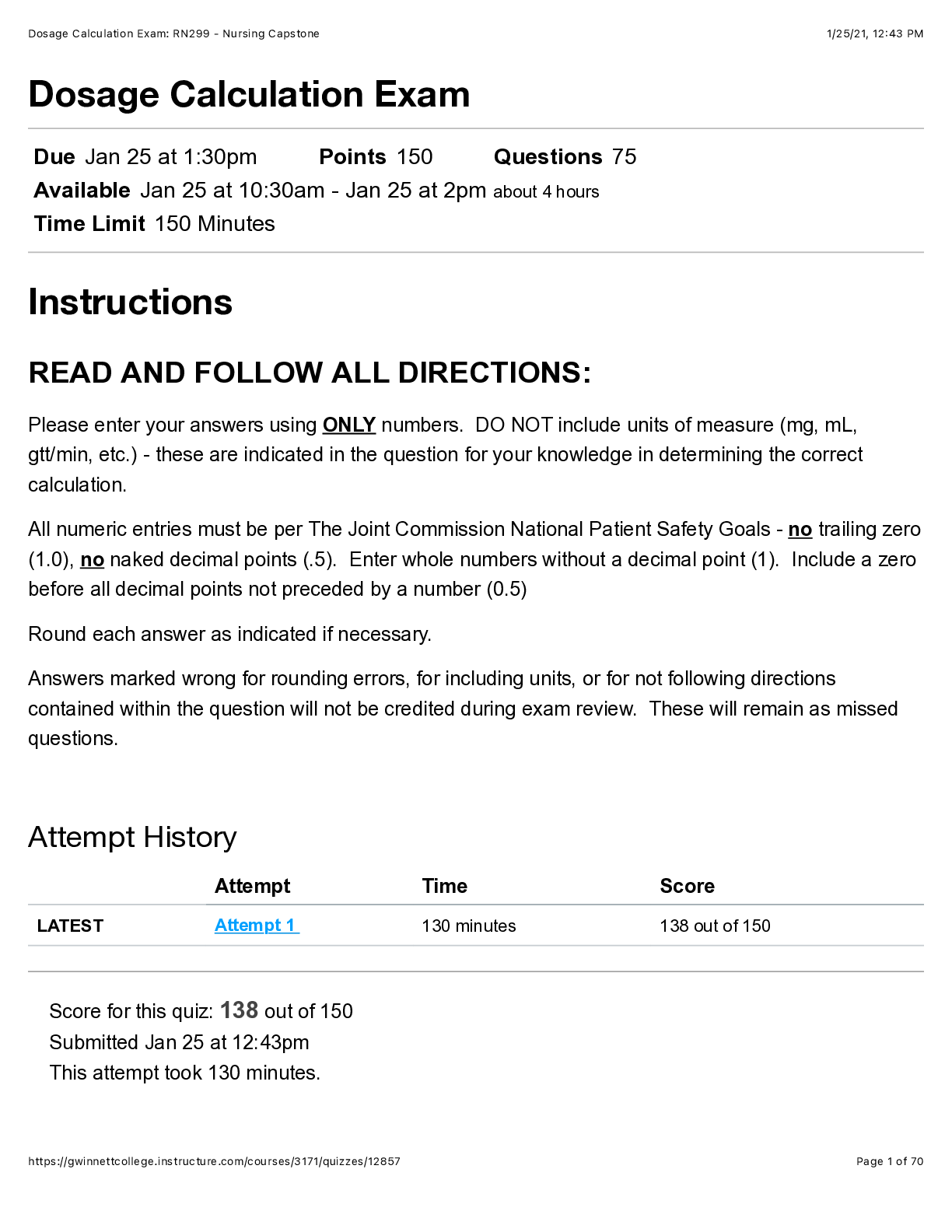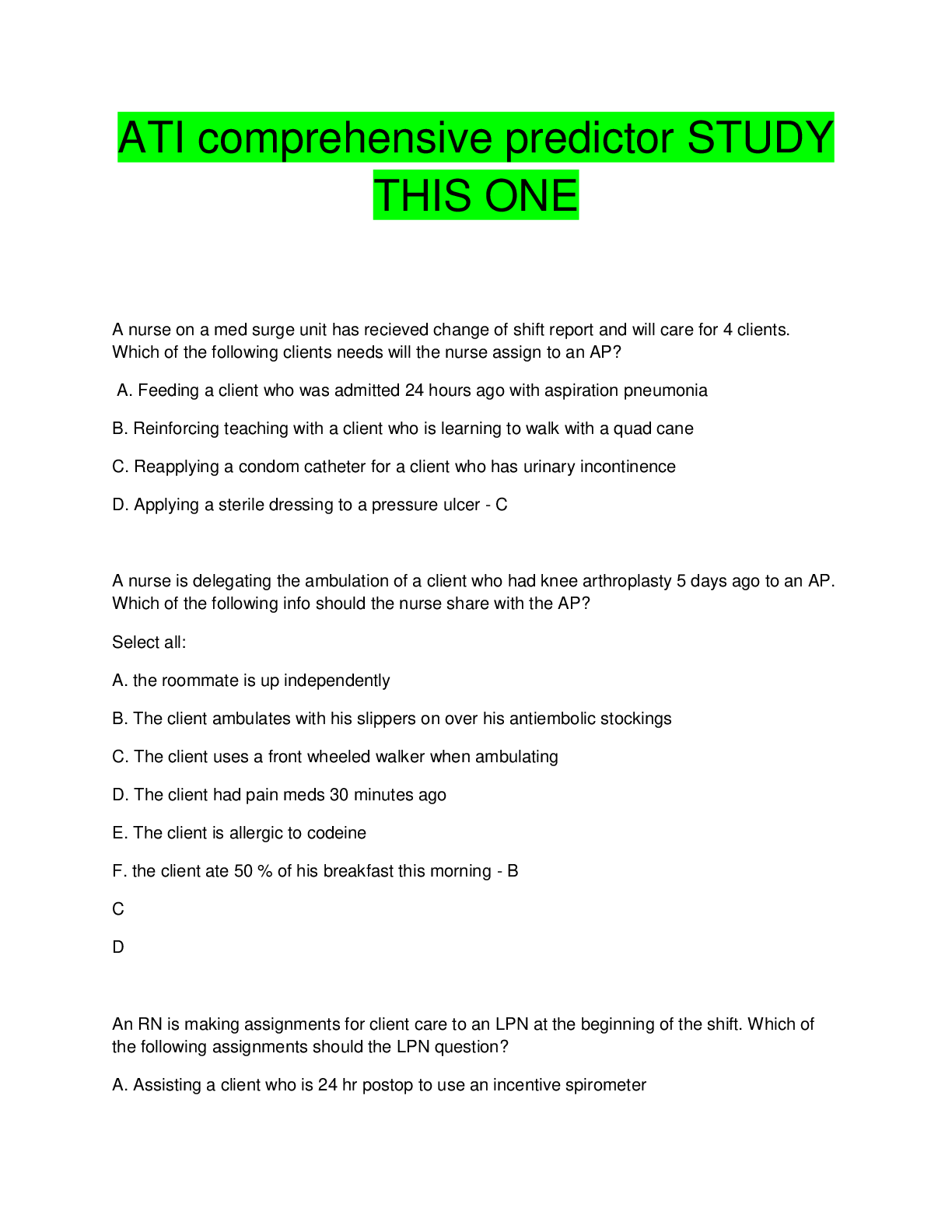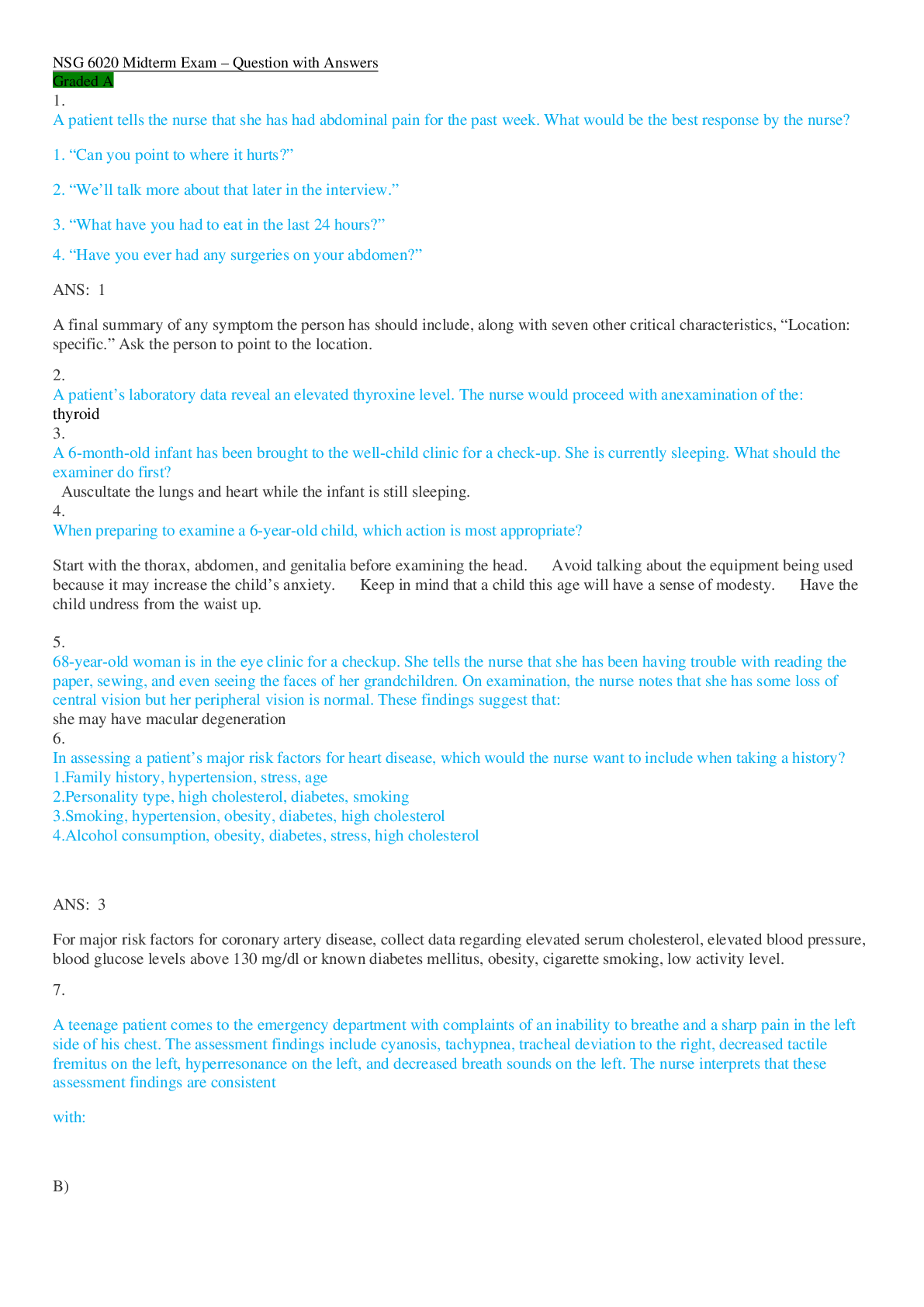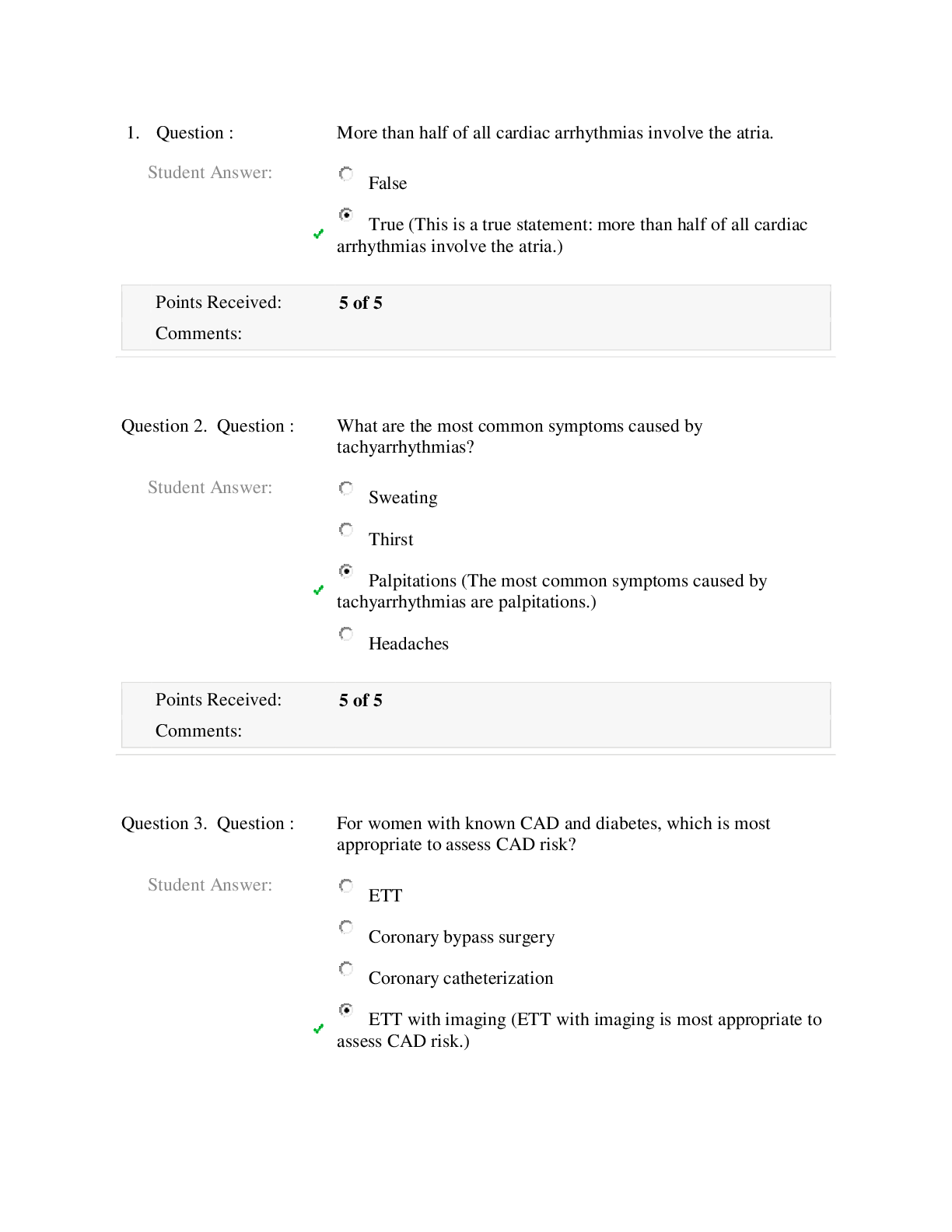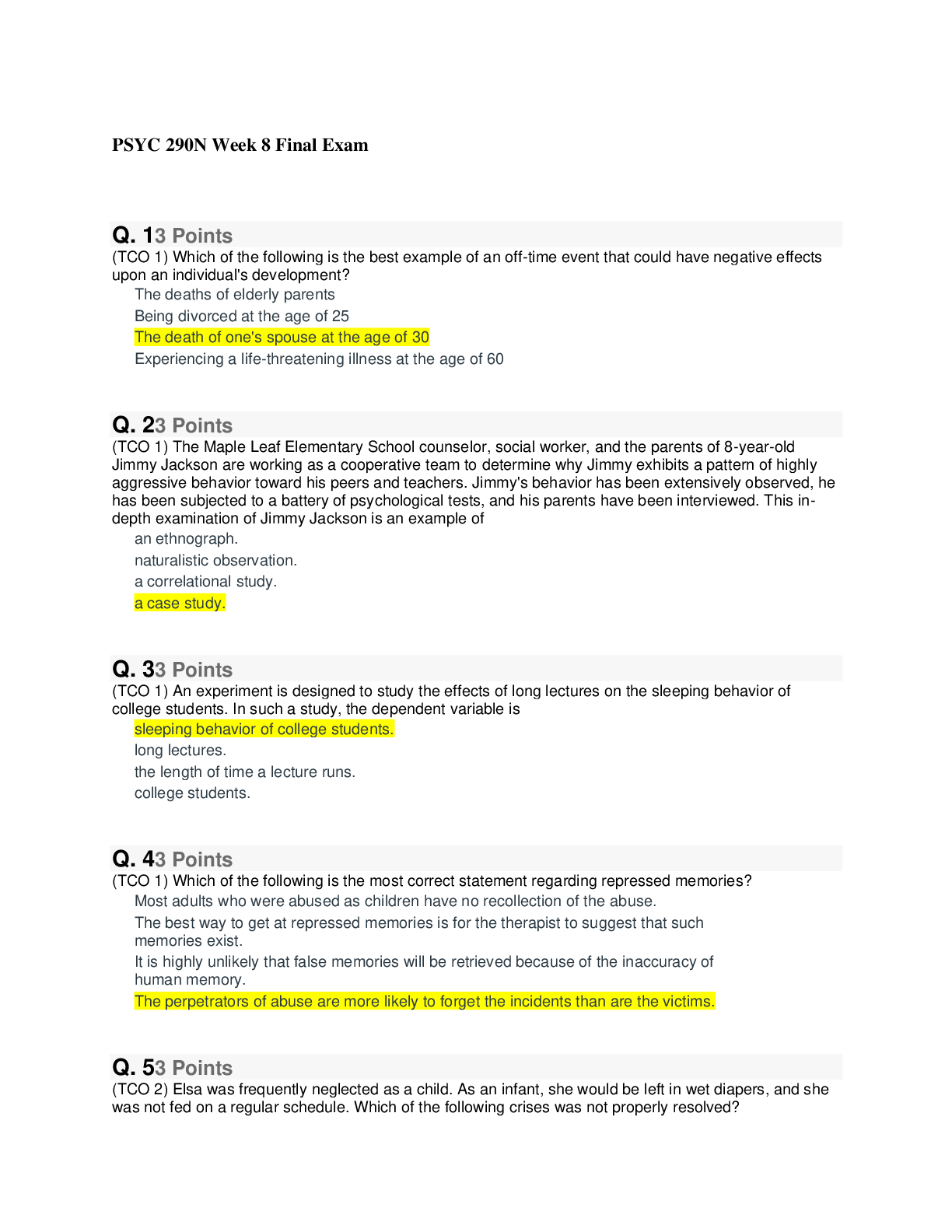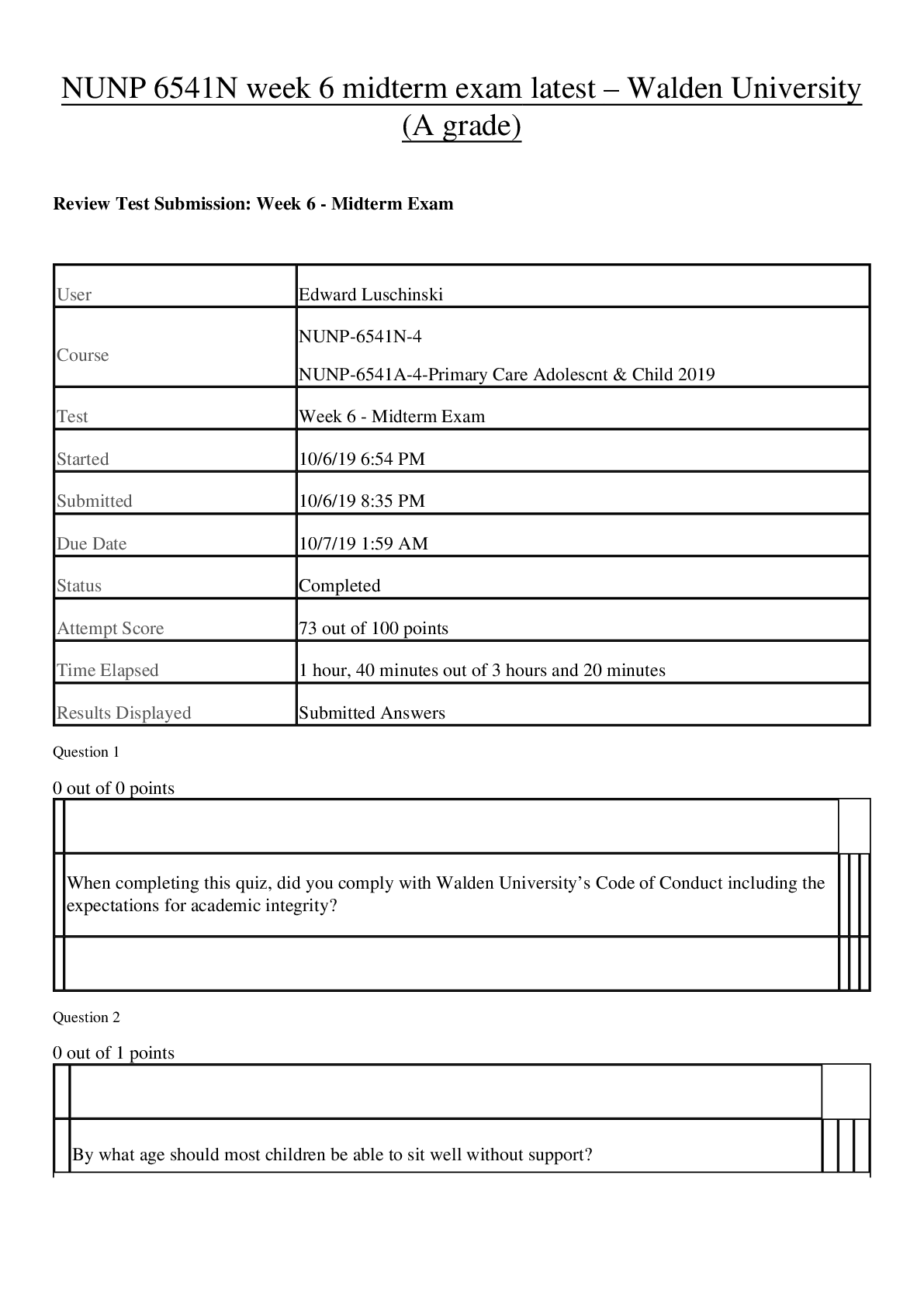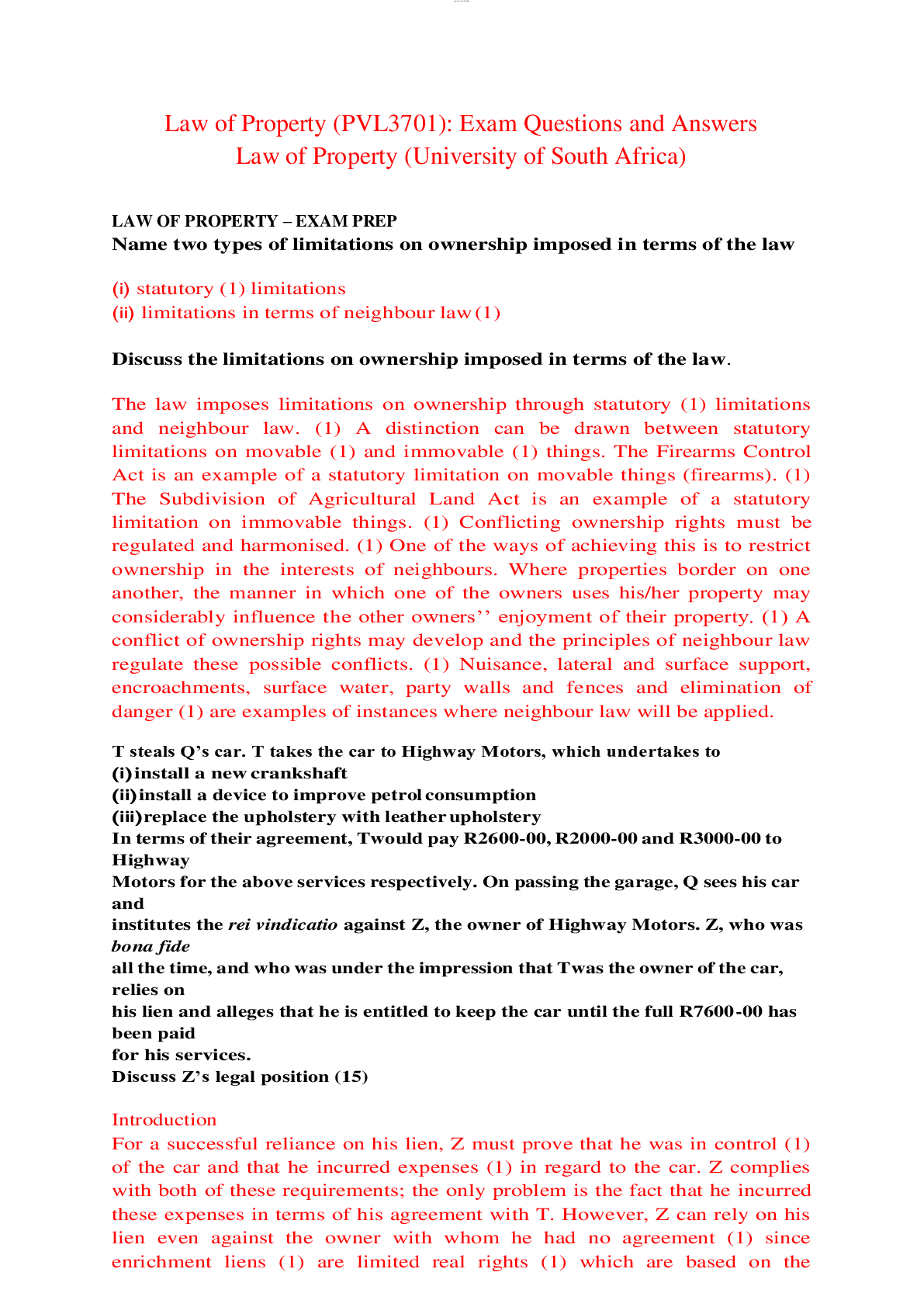Military Studies > EXAM > Servsafe Manager Exam latest update 2022 (All)
Servsafe Manager Exam latest update 2022
Document Content and Description Below
1.1 What is a foodborne-illness outbreak? A. When two or more food handlers contaminate multiple food items B. When an operation serves contaminated food to two or more people C. When two or more... people report the same illness from eating the same food D. When the CDC receives information on two or more people with the same illness C. When two or more people report the same illness from eating the same food 1.2 Which is a ready to eat food? A. Uncooked rice B. Raw deboned chicken C. Sea salt D. Unwashed green beans C. Sea salt 1.3 Why are preschool-age children at a higher risk for foodborne illness? A. They have not built up strong immune systems B. They are more likely to spend time in a hospital C. They are more likely to suffer allergic reactions D. Their appetites have increased since birth A. They have not built up strong immune systems 1.4 Which is a TCS food? A. Bread B. Flour C. Sprouts D. Strawberries C. Sprouts 1.5 The 5 common risk factors that can lead to foodborne illness are failing to cook food adequately, holding food at incorrect temperatures, using contaminated equipment, practicing poor personal hygiene, and A. reheating leftover food B. serving ready-to-eat food C. using single-use, disposable gloves D. purchasing food from unsafe sources D. purchasing food from unsafe sources 1.6 Raw chicken breasts are left out at room temp on a prep table. What is the main risk that could cause a foodborne illness? A. Cross-contamination B. Poor personal hygiene C. Time-termperature abuse D. Poor cleaning and sanitizing C. Time-temperature abuse 1.7 What is TCS food? A. Food requiring thermometer checks for security B. Food requiring trustworthy conditions for service C. Food requiring training commitments for standards D. Food requiring time and temperature control for safety D. Food requiring time and temperature control for safety 1.8 A food handler left a pan of roasted turkey breasts to cool at room temperature overnight. In addition to throwing away the turkey, what is an appropriate corrective action? A. Complete an incident report B. Order additional turkey breasts C. Deduct the cost from the food handler's pay D. Make sure the food handler understands safe cooling practices D. Make sure the food handler understands safe cooling practices 1.9 What is an important measure for preventing foodborne illness? A. Using new equipment B. Measuring pathogens C. Preventing cross-contamination D. Serving locally grown, organic food C. Preventing cross-contamination 1.10 What is one possible function of a government agency that is responsible for food safety? A. Ensuring a product's appeal B. Approving a construction project C. Monitoring an operation's revenue D. Protecting a product's brand name B. Approving a construction project 2.1 What are the most common symptoms of a foodborne illness? A. Diarrhea, vomiting, fever, nausea, abdominal cramps, and dizziness B. Diarrhea, vomiting, fever, nausea, abdominal cramps, and headache C. Diarrhea, vomiting, fever, nausea, abdominal cramps, and jaundice D. Diarrhea, vomiting, fever, nausea, abdominal cramps, and tiredness C. Diarrhea, vomiting, fever, nausea, abdominal cramps, and jaundice 2.2 How does most contamination of food happen? A. Through contaminated water B. When contaminants are airborne C. When people cause the contamination D. Through the use of contaminated animal products C. When people cause the contamination 2.3 What is the most important way to prevent a foodborne illness from bacteria? A. Control time and temperature B. Prevent cross-contamination C. Practice good personal hygiene D. Practice good cleaning and sanitizing A. Control time and temperature 2.4 What is the most important way to prevent a foodborne illness from viruses? A. Control time and temperature B. Prevent cross-contamination C. Practice good personal hygiene D. Practice good cleaning and sanitizing C. Practice good personal hygiene 2.5 Parasites are commonly linked with what type of food? A. Rice B. Poultry C. Seafood D. Canned food C. Seafood 2.6 A guest had a reversal of hot and cold sensations after eating seafood. What most likely caused the illness? A. Parasites B. Allergic reaction C. Biological toxins D. Chemical contamination C. Biological toxins 2.7 A prep cook stores a bottle of sanitizer on a shelf above a prep table. To prevent chemical contamination, what should be done differently? A. Store the sanitizer bottle away from the prep area B. Store the sanitizer bottle on the floor between uses C. Store the sanitizer bottle on the work surface of the prep table D. Store the sanitizer bottle with food supplies below the prep table A. Store the sanitizer bottle away from the prep table 2.8 To prevent the deliberate contamination of food, a manager should know who is in the facility, monitor the security of the products, keep information related to food security on file, ad know A. when to register with the EPA B. how to fill out an incident report C. where to find Safety Data Sheets in the operation D. whom to contact about suspicious activity D. whom to contact about suspicious activity 2.9 What should food handlers do to prevent food allergens from being transferred to food? A. Use clean and sanitized utensils when prepping the order B. Cook food to the appropriate minimum internal temperature C. Store cold food at 41°F (5°C) or lower D. Label chemical containers correctly A. Use clean and sanitized utensils when prepping the order 2.10 What step should be taken if a manager suspects a foodborne-illness outbreak? A. Reheat the suspected product to a safe temperature B. Provide as little information as possible to the regulatory authority C. Deny that the operation has anything to do with the foodborne-illness outbreak D. Set aside the suspected product and label it with "do not use" and "do not discard" D. Set aside the suspected product and label it with "do not use" and "do not discard" 3.1 After which activity must food handlers wash their hands? A. Cleaning tables B. Putting on gloves C. Serving customers D. Applying hand antiseptic A. Cleaning tables 3.2 When washing hands, what is the minimum time you should scrub with soap? A. 5 seconds B. 10 seconds C. 20 seconds D. 40 seconds B. 10 seconds [Show More]
Last updated: 2 years ago
Preview 1 out of 23 pages

Buy this document to get the full access instantly
Instant Download Access after purchase
Buy NowInstant download
We Accept:

Reviews( 0 )
$13.00
Can't find what you want? Try our AI powered Search
Document information
Connected school, study & course
About the document
Uploaded On
Nov 17, 2022
Number of pages
23
Written in
Additional information
This document has been written for:
Uploaded
Nov 17, 2022
Downloads
0
Views
49

